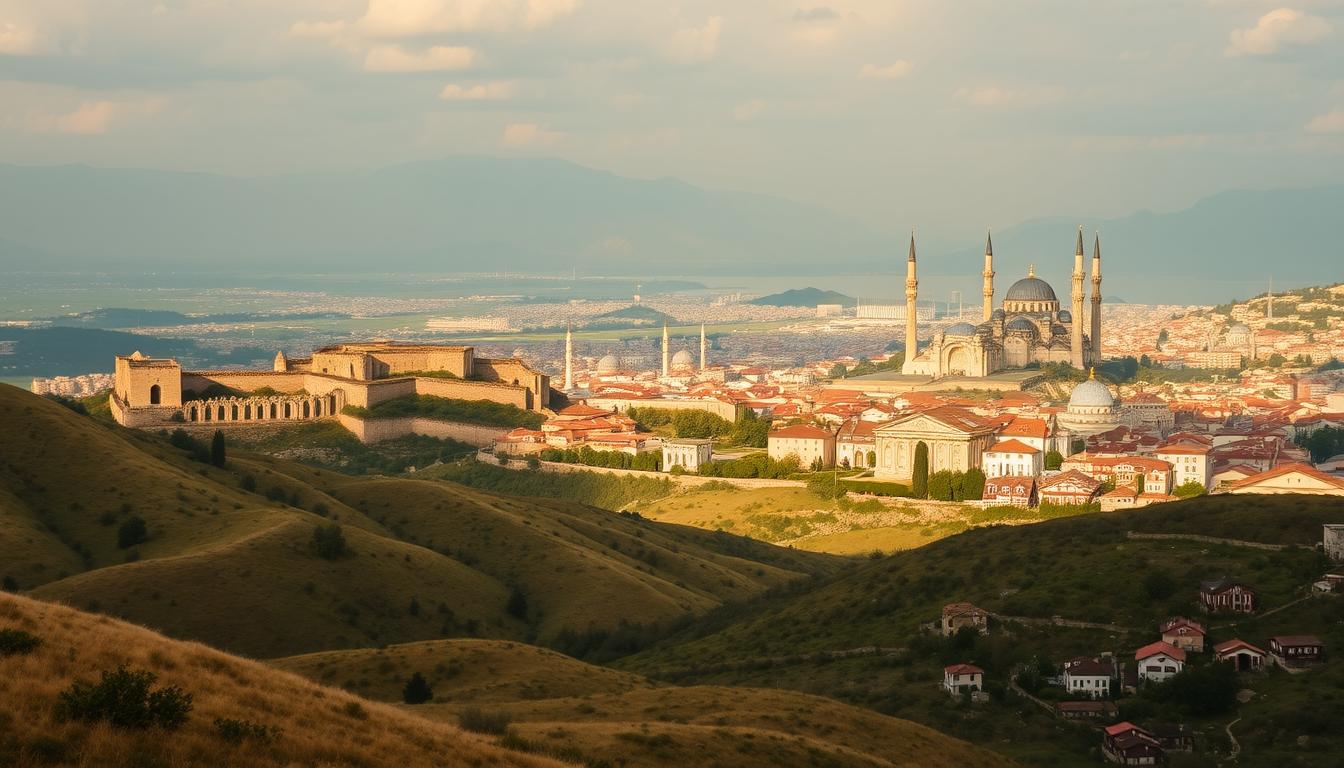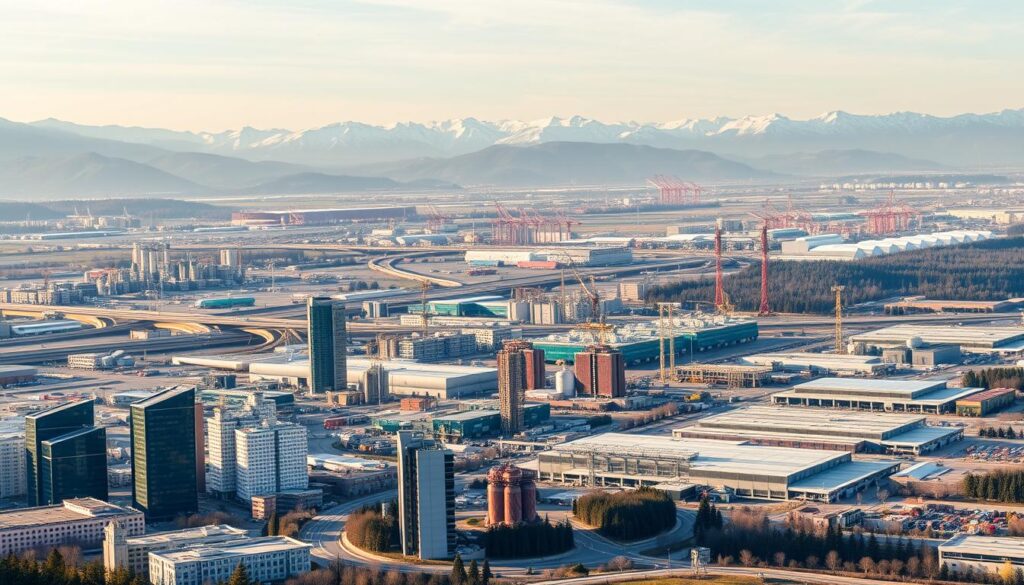Nestled in southeastern Europe, the Balkan Peninsula is a mosaic of cultures shaped by centuries of crossroads between empires, religions, and traditions. This land bridges continents and civilizations, blending Mediterranean warmth with Slavic resilience. From the Adriatic’s turquoise coasts to the Carpathian Mountains’ rugged peaks, the region’s natural beauty matches its complex heritage.
Defining the area’s exact boundaries sparks debate, as historical shifts and ethnic diversity challenge simple maps. Nations like Albania, Croatia, and Serbia share influences from Ottoman, Byzantine, and Austro-Hungarian rule. Ancient Roman roads wind past Byzantine churches, while Ottoman mosques stand beside vibrant modern cities.
This article uncovers how geography forged unique identities across the peninsula. Discover how ancient Illyrians and Thracian tribes laid foundations for today’s communities. Learn why mountain ranges like the Dinaric Alps shaped trade routes and cultural exchange. We’ll also explore recent efforts toward economic integration and regional cooperation.
Key Takeaways
- The Balkan Peninsula hosts over 10 nations with distinct languages and traditions.
- Historical influences range from ancient Greek colonies to 20th-century geopolitical shifts.
- Natural features like the Danube River and Adriatic Coast define regional ecosystems.
- Ethnic diversity complicates efforts to create unified cultural or political narratives.
- Modern infrastructure projects aim to strengthen cross-border connections.
Introduction to the Balkan Peninsula
Stretching across southeastern Europe, this landmass has sparked endless debates among geographers. Where exactly does it begin and end? Most agree it’s framed by four seas: Adriatic, Ionian, Aegean, and Black. Yet maps vary widely – some include entire nations, others only fragments.
Defining the Region
The term “Balkan” comes from Turkish, meaning “wooded mountain range.” This explains why 60% of the terrain rises above 1,600 feet. But political lines complicate things. “Is Slovenia truly part of the peninsula? Depends who you ask,” notes historian Luka Marković. Cultural ties often override strict geography in these discussions.
Historical and Cultural Context
Central Europe’s influence blends with Mediterranean flavors here. Roman aqueducts crumble near Ottoman-era bazaars, while Byzantine mosaics glitter in Orthodox churches. Over 14 empires have left footprints, creating a layered identity. From Venetian coastal forts to Habsburg coffeehouses, every era adds to the mix.
Modern borders still shift subtly. Recent infrastructure projects aim to connect markets across old divides. Yet the region remains a living museum of human adaptation, where traditions outlast political storms.
Geography and Natural Wonders of the Balkans
The region’s landscape tells stories of tectonic collisions and ancient waterways. Sharp peaks tower over valleys carved by rivers, while coastal cliffs meet turquoise waters. These features have shaped ecosystems and human history for millennia.
Mountain Ranges and River Systems
The Dinaric Alps stretch like a limestone spine along the Adriatic coast. Further east, the Balkan Mountains form a natural border between climates. “These ranges created sheltered valleys where medieval kingdoms thrived,” explains geographer Ana Petrović.
The Danube River carves through the north, linking 10 nations. Its tributaries nourish farmlands and cities. Smaller rivers like the Neretva cut dramatic gorges, creating routes for trade and cultural exchange.
Coastal Features: Adriatic, Ionian, and Black Seas
Crystal-clear waters dominate the west, where the Adriatic and Ionian Seas meet rocky shores. Sandy beaches line the Black Sea’s warmer currents. Each coast has distinct microclimates:
| Sea | Coastline Length | Key Feature |
|---|---|---|
| Adriatic | 4,200 miles | Karst cliffs & medieval ports |
| Ionian | 810 miles | Olive groves & hidden coves |
| Black | 2,500 miles | Wide beaches & wetland reserves |
Dry summers define Mediterranean zones, while mountain air cools inland areas. This diversity supports 40% of Europe’s plant species. Kayakers paddle river rapids, while hikers conquer trails older than Roman roads.
Understanding balkan countries
This region’s political map reveals fascinating diversity. Twelve sovereign states claim territory on the peninsula, each with distinct governance systems. Definitions vary—some nations lie entirely within geographic boundaries, while others straddle cultural lines.
Overview of Countries in the Peninsula
Seven states are universally recognized as core members. Bosnia and Herzegovina stands out with three presidential representatives reflecting its main ethnic groups. North Macedonia renamed itself in 2019 to resolve historical disputes. The table below highlights key details:
| State | Capital | Population | Unique Feature |
|---|---|---|---|
| Bosnia and Herzegovina | Sarajevo | 3.3 million | Three official languages |
| North Macedonia | Skopje | 1.8 million | Ancient Roman Via Egnatia |
| Serbia | Belgrade | 6.7 million | Byzantine fortress capital |
| Montenegro | Podgorica | 0.6 million | UNESCO medieval coastline |
Demographics and Ethnic Diversity
South Slavic communities form majorities in most areas, but minority populations create vibrant mosaics. Albania’s 2.8 million people include Greek and Macedonian groups. Croatia’s Dalmatian coast blends Italian and Illyrian influences.
Post-Yugoslav states maintain complex ties. Over 30% of Bosnia’s residents identify outside the three main ethnicities. Romania’s Dobruja region hosts Tatar and Turkish communities dating from Ottoman times. Urban centers like Belgrade attract global migrants, adding new layers to traditional identities.
Historical Evolution of the Balkan Peninsula
The Balkan Peninsula’s past unfolds like a layered tapestry, woven by empires and etched by conflict. Early inhabitants like the Illyrians forged hilltop fortresses, while Thracian tribes developed intricate metalwork traditions. These foundations shaped trade networks stretching from the Aegean to Central Europe.
From Antiquity to Ottoman Influence
Mountain ranges and waterways dictated cultural flows for millennia. The Balkan Mountains sheltered distinct dialects, while the Danube River carried goods between Mediterranean ports and inland settlements. Byzantine engineers later built fortifications along these natural corridors, blending Roman infrastructure with local ingenuity.
Ottoman rule introduced new architectural styles and administrative systems. Mosques with pencil-thin minarets rose beside Orthodox churches, creating urban skylines still visible today. “You can taste four centuries of history in a single Bosnian courtyard,” observes heritage architect Emir Kovačević.
Twentieth-century conflicts redrew maps across the region. World War I sparked the collapse of empires, creating smaller states along ethnic lines. Recent archaeological discoveries reveal how ancient trade routes influence modern highway projects, proving geography remains destiny.
From traditional folk dances to multilingual governance models, historical echoes persist. Serbia’s law codes retain Ottoman-era land ownership principles, while Croatia’s coastal towns preserve Venetian-inspired festivals. These living connections make the peninsula a classroom of human adaptation.
Cultural Heritage and Tourist Attractions
Historic treasures and vibrant traditions draw millions to this crossroads of civilizations. Ancient ruins stand alongside lively festivals, creating unique travel experiences. Coastal gems along the Adriatic and Ionian Seas attract over 15 million people annually, while capitals like Sarajevo and Skopje pulse with cultural energy.
Architectural Marvels and Ancient Sites
Dubrovnik’s medieval walls dominate Croatia’s Adriatic coast, a UNESCO site preserving 13th-century engineering. Bosnia and Herzegovina showcases Ottoman-era bridges like Stari Most, rebuilt using 16th-century techniques. North Macedonia’s Heraclea Lyncestis reveals Byzantine mosaics near modern vineyards.
Three great empires left marks across the region:
- Roman amphitheaters in Pula host summer concerts
- Venetian fortresses guard Albanian sea coasts
- Orthodox monasteries hide frescoes in Serbian valleys
Local Traditions and Festivals
Sarajevo’s Winter Festival transforms Bosnia and Herzegovina’s capital into a luminous wonderland each February. North Macedonia celebrates South Slavic roots through the Ohrid Summer Festival, featuring folk dances beside Europe’s oldest lake.
| Event | Location | Highlights |
|---|---|---|
| Mostar Diving Competition | Neretva River | Bridge jumps honoring 450-year tradition |
| Kukeri Festival | Bulgarian Mountains | Masked rituals to ward off evil spirits |
| Split Summer | Croatian Coast | Open-air theater in Diocletian’s Palace |
These celebrations blend ancient customs with modern artistry, ensuring cultural legacies thrive. Coastal towns along the Ionian Sea host seafood feasts using recipes from Homeric times, proving tradition fuels today’s tourism appeal.
Modern Developments and Regional Integration
New infrastructure projects and policy reforms signal transformative shifts across southeastern Europe. Governments balance modernization with cultural preservation, creating dynamic economies while honoring centuries-old traditions.
Economic Growth and EU Aspirations
Foreign investment in renewable energy and tech sectors drives regional progress. Montenegro and Serbia lead EU accession talks, requiring judicial reforms and anti-corruption measures. Bosnia Herzegovina faces challenges unifying its tripartite governance system to meet membership criteria.
North Macedonia’s 2019 name change resolved a decades-long dispute with Greece, accelerating its EU integration. The state now attracts manufacturing investments, particularly in automotive parts. Over 60% of exports from Adriatic Sea ports now flow to EU markets.
Cross-border initiatives address historical tensions. A recent Black Sea tourism partnership links Bulgarian resorts with Romanian heritage sites. Joint customs controls streamline trade along key transport corridors.
Regional cooperation extends to energy security. Seven states now share electricity grids through the Western Balkans Connectivity Agenda. This reduces reliance on single suppliers while cutting carbon emissions by 18% since 2020.
“Our future lies in unity, not division. Modern infrastructure revives ancient trade routes that once connected these lands.”
Cultural diplomacy strengthens ties between South Slavic communities. Shared film festivals and language preservation programs celebrate diversity while fostering mutual understanding. These efforts prove progress needn’t erase heritage.
Conclusion
The intricate blend of natural beauty and human resilience defines this European crossroads. Towering mountains and winding rivers create natural borders, while political lines reflect centuries of cultural exchange. From the Danube’s fertile plains to the Aegean Sea’s rocky shores, geography continues shaping identities.
Climate patterns influence daily rhythms across the region. Cold winters in mountainous areas contrast with warm summers along coastal zones. Dry summers support olive cultivation, while rainy winters sustain ancient forests.
Capitals like Sarajevo and Belgrade embody layered histories, where Ottoman minarets stand beside Habsburg architecture. These urban centers anchor modern governance while preserving traditions. The total population of 40 million people maintains dialects and customs forged through world war upheavals and imperial legacies.
Understanding the term “Balkan Peninsula” requires recognizing its dual nature. It describes both a landmass and a cultural tapestry woven from countless influences. As infrastructure projects connect the Western Balkans, new chapters unfold alongside enduring traditions.
Travelers seeking authentic experiences will find coastlines and highlands revealing stories in every stone. This region invites exploration with fresh eyes – where every valley whispers secrets of adaptation and survival.







